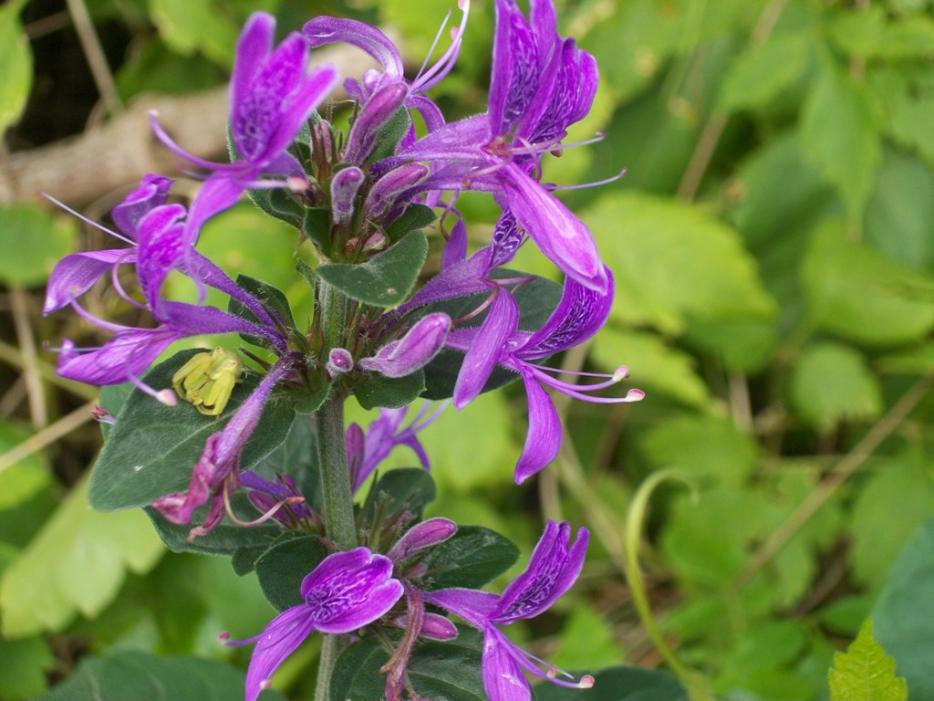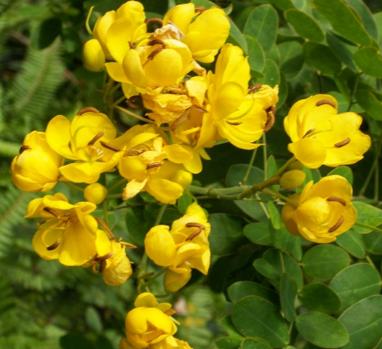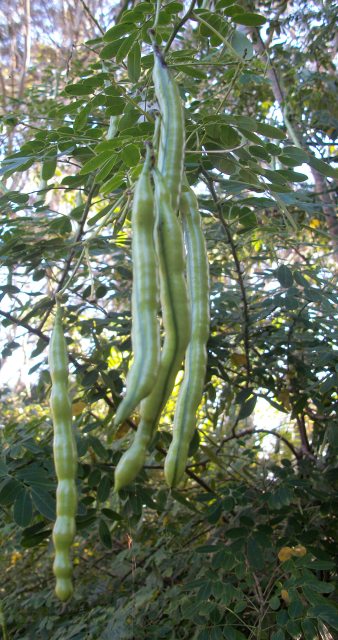July 8 - 14, 2012: Issue 66 Winter Weed Pull

Blue spur flower Plectranthus ecklonii and a Crab Spider Sidymella rubrosignata

Easter cassia (Senna pendula var. glabrata), originally from South America, is regarded as a significant environmental weed in New South Wales; pods are maturing now and flowers finishing.

Winter Weed Pull
“Kind hearts are the gardens, Kind thoughts are the roots, Kind words are the flowers, Kind deeds are the fruits, Take care of your garden And keep out the weeds, Fill it with sunshine Kind words and kind deeds”
Henry Wadsworth Longfellow
Recent wet weather and cold winds have combined to make conditions that suit weed pulling. Damp ground makes extracting invasive species easier and the cold winds will soothe a hot brow while working in winter sunshine.
Above is the Blue spur flower Plectranthus ecklonii and a Crab Spider Sidymella rubrosignata. This type of spider is an ambush predator, lurking around flowers for visiting flies etc. Its front legs are much longer than the rest, used for grabbing its prey, an insect visiting the flower. It doesn't spin a web, but uses a silk thread to secure its position on the petal. This spider is one of the gardener's many tiny allies and a good reason not to use insecticides in the garden.
The blue spur flower (Plectranthus ecklonii), originally a south African plant, is regarded a minor environmental weed in Victoria and as a potential environmental weed or 'sleeper weed' in other parts of southern Australia. Regarded as ‘Naturalised’ (establishing or persisting in a new environment or location after being introduced from another region) in some parts of south-eastern Australia (i.e. in southern Victoria and the coastal districts of central New South Wales), this beautiful weed flowers in late Autumn and winter in Australia but drops a lot of seed and also propagates from stems left on damp ground. See the www.plantzafrica.com/plantnop/plectranecklon.htm website of Kirstenbosch Botanical Gardens in Capetown South Africa.
Weed Pulling basics:
Identify the weeds you want to remove, so you do not accidentally pull beneficial or desirable plants while you work. Look at the hazards of weed pulling you should consider. Here are some dangers involved in this apparently safe activity.; Beware of toxic plants and plants you may be allergic to. Be aware of insects that may inhabit your garden or lawn. Spiders, bees, wasps, ants, and other potentially dangerous insects may be encountered while enjoying this activity. Watch for snakes. Understand your own limitations. Weed-pulling can be back-breaking work, so be careful not to overdo it. Wear sunscreen and keep hydrated while you work if you are working in bright sunshine.
Choose the right time for the task. Pulling weeds is much easier when the ground is wet, so working soon after a rain will make the job easier. Use gardening gloves. Grab the weed at the base of the main stem as far down as possible. Grip the bottom of the weed tightly and pull it sharply out of the ground. Collect the weeds and dispose of them so their seeds are not reintroduced into your lawn or garden.
Our thanks to Marita Macrae of the Pittwater Natural Heritage Foundation for identifying this plant.
Weed Seminar - Sat July 21st 2012
The Pittwater Natural Heritage Association (PNHA) in association with Pittwater Council are holding a two-hour seminar designed to introduce residents to some of our local weeds and garden escapees. What are “noxious” weeds and what are WONs (Weeds of National Significance)? How do we remove them? What local native plants can we replace them with? Could we mistake a native plant for a weed? How do I get involved with a local bushcare group? Bring along all your questions for our local experts.
Saturday July 21st 2012 , 1pm – 3pm, Coastal Environment Centre, Lake Park Road, Narrabeen NSW 2101. Cost: Free Bookings Online at: www.pittwater.nsw.gov.au/cecbookings
Pittwater Council Websites Weed Identification PAGE